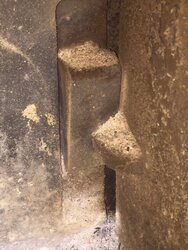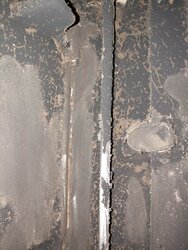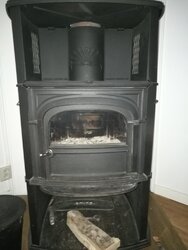Hi,
I have an Intrepid II (the danica casing) and im not sure when to switch to catalytic mode. The only way for me to measure the temperature is on top of the stove , I usually get this up to around 225 Celsius and when i switch to catalytic mode i see that most of the flames go into the combustion chamber and i hear a "roar" and some clicking. However there is still smoke coming from the chimney when i go out to have a look, its hard to see but when its cold it looks mostly white at least.
How hot can you have the stove without it beeing a problem? I have measured stovetoptemp up to around 320C sometimes and im not sure if this is normal or not (in catalytic mode).
Im not sure how it is supposed to look, but when in catalytic mode i was under the impression that the flames would almost be invvisible but i still have a pretty normal fire even though its not as intense as when in bypass mode.
Another question about the chimney smoke, when i lower the burnrate i can see this from the chimney, the smoke is "slower" and seems to fall down to the ground more and its smells more compared to when in bypass mode, normal or not?
Any input is appreciated!
I have an Intrepid II (the danica casing) and im not sure when to switch to catalytic mode. The only way for me to measure the temperature is on top of the stove , I usually get this up to around 225 Celsius and when i switch to catalytic mode i see that most of the flames go into the combustion chamber and i hear a "roar" and some clicking. However there is still smoke coming from the chimney when i go out to have a look, its hard to see but when its cold it looks mostly white at least.
How hot can you have the stove without it beeing a problem? I have measured stovetoptemp up to around 320C sometimes and im not sure if this is normal or not (in catalytic mode).
Im not sure how it is supposed to look, but when in catalytic mode i was under the impression that the flames would almost be invvisible but i still have a pretty normal fire even though its not as intense as when in bypass mode.
Another question about the chimney smoke, when i lower the burnrate i can see this from the chimney, the smoke is "slower" and seems to fall down to the ground more and its smells more compared to when in bypass mode, normal or not?
Any input is appreciated!





